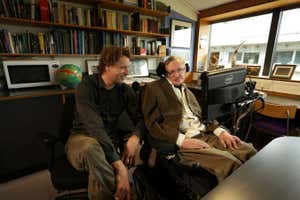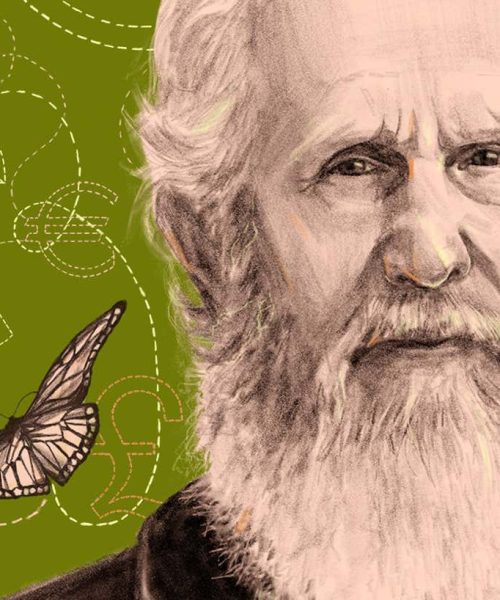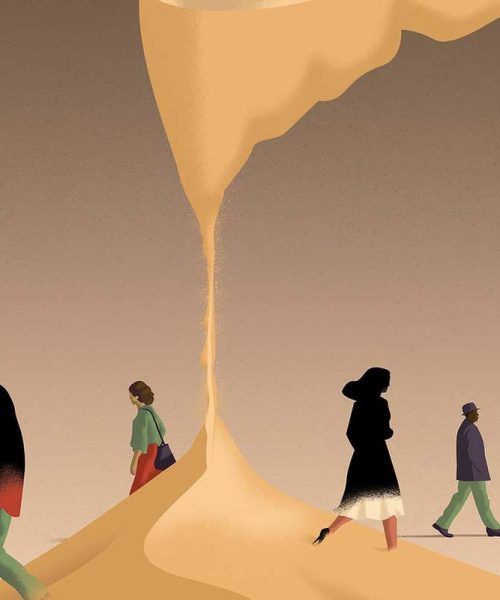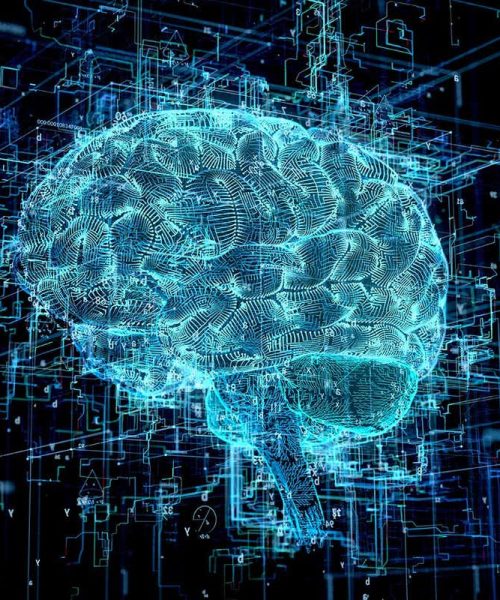
Thomas Hertog (left) collaborated with Stephen Hawking for many years
Courtesy of Thomas Hertog
IT WAS common knowledge among students at the University of Cambridge that whoever obtained the best marks in the final part of the mathematical tripos exams would be summoned to see Stephen Hawking. I had just got my results and had come top. Sure enough, I was invited for a discussion with him.
I made my way to his office deep in the labyrinth of the department of applied mathematics and theoretical physics, which was housed in a creaking Victorian building on the banks of the river Cam. Stephen’s office was just off the main common room, and even though it was noisy there, he liked to keep his door ajar. I knocked, paused and slowly pushed it open.
I didn’t quite know what to expect on the other side of that door. I knew, of course, that Stephen was famous for his work on black holes and that he had even got into trouble for some of his ideas about what happens when they explode. But it turned out that he was musing on a different question: why is the universe just right for life to arise?
Pondering this question would turn into a long quest for us both. For the next two decades, until his death, Stephen and I worked shoulder to shoulder on novel ideas that suggest a radically new understanding of why the universe is the way it is. In our conception, the laws of physics themselves have, in a sense, evolved to be the …





